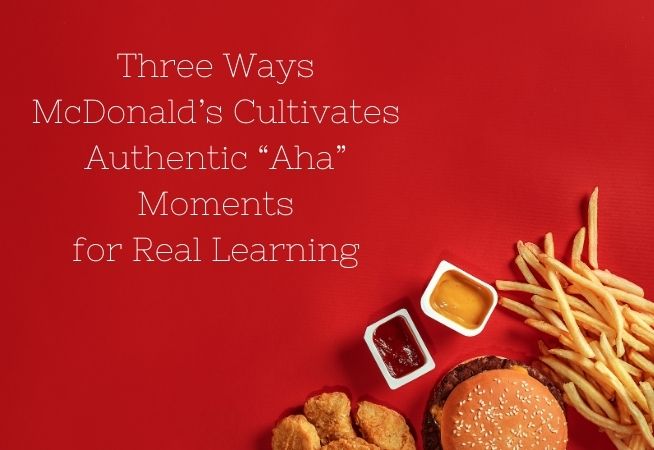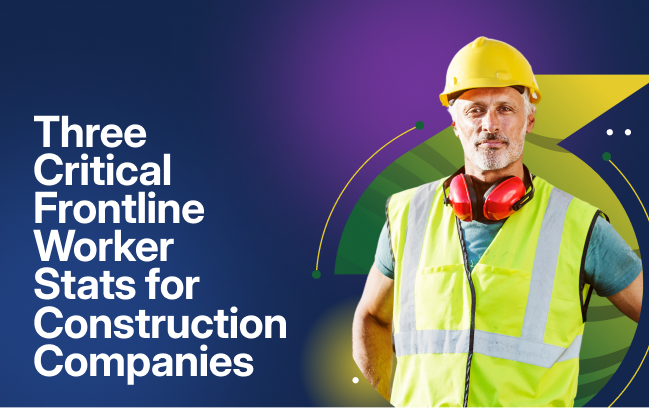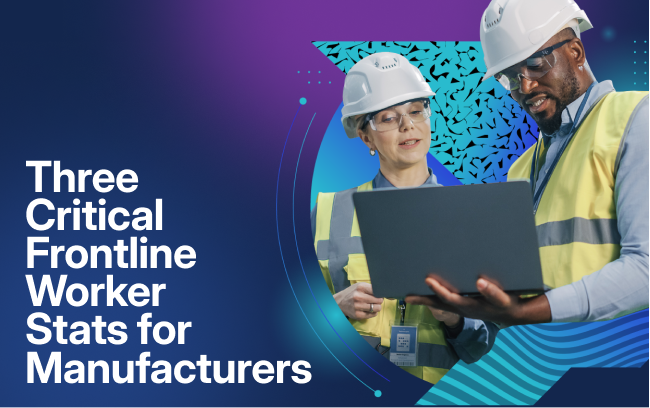January 18, 2024
1 Min. Read

With over two million users globally, McDonald’s is no stranger to the challenges of delivering learning across a complex enterprise. It’s easy to assume such a large company isn’t so concerned about its people, but that couldn’t be further from the truth.
In many ways, McDonald’s sets the standard for operating at scale. Yet despite such an infamous global footprint, the fast food all-star emphasizes the importance of human connection above all else.
Lan Tran, Director of Learning Design and Technology for McDonald’s, shares what it’s like to design learning and development programs for such an iconic company:
“It’s impossible to do anything right for two million people without focusing on the people.”
Lan Tran, Director of Learning Design and Technology at McDonald’s
Keep reading for more of Lan’s thoughts around designing learning and development programs for the french fry enterprise and why she believes cultivating authentic “aha!” moments is the key to effective skill development at any organization.
From French Fries to Franchise Training
As L&D professionals know all too well, training can be challenging. Encouraging people to learn on their own accord is an even more challenging goal, albeit necessary for companies that partner with thousands of franchise owners.
Training and talent development are critical in these environments, especially for a company like McDonald’s, which strives to maintain a cohesive brand and positive reputation worldwide.
Franchise training is particularly tough because most learners aren’t considered direct employees. That means McDonald’s can’t mandate employees to take the training offered by corporate—the learning opportunities have to be compelling enough to convince people to engage. Here are three ways they do it:
Keep it Bite-Sized: Micro-Content is King
In a world of distractions, it’s difficult to grab (and keep!) people’s attention.
In her experience digging into the data at another company, Lan found that people were accessing the learning academy more; still, the total learning hours logged decreased compared to the prior year. This told Lan and her team that people opted for shorter learning experiences over long-form content.
What they saw in the data also follows media trends, evidenced by the immense popularity of bite-sized content like TikTok videos. “We need to create content that mimics what’s popular if we want people to engage with learning,” shares Lan.
Multitasking is another major consideration for the L&D team at McDonald’s. According to Lan, making french fries might seem simple, but all the activity around the task makes it difficult for frontline employees. The fries, for example, need to meet demand while remaining fresh for each customer—so even though it would be a lot easier to make them in bulk, employees can’t fry too many at once.
Details like these impact how Lan and her team deliver learning because it has to fit within the flow of work for each employee. “When creating content, these limitations force us to consider that if we only have one minute, what are the most important things people need to know right now?” she shares.
Know Your People: A Different Kind of Happy Meal
One of Lan’s guiding principles is that you can’t create something for human beings unless you know something about them.
“What do they struggle with? What motivates them? Why do they like the things they do?” asks Lan in her conversation with our own David Wentworth on the Schoox podcast, “They Learn, You Win.”
At companies with large frontline and deskless workforces and young learners working their very first jobs, L&D leaders face the double-edged challenge of delivering learning at scale while appealing to vast and highly diverse audiences. For training to be practical and effective, Lan and her team must be as thoughtful as they are strategic. They have to consider the technology needs and accessibility challenges of each learner, as well as the formats that will resonate most with their audiences.
“I strongly believe that if your people are happy, you’ll have a much more productive culture.”
Lan Tran, Director of Learning Design and Technology at McDonald’s
Encourage Real Learning: Behavior Change Comes from Within
At its core, learning is about behavior change. Companies like McDonald’s know they can give employees access to all the resources in the world, but it will only translate into meaningful results—like increases in knowledge and skill levels—if it’s delivered in a way that resonates.
To ensure training is a valuable use of everyone’s time, the McDonald’s team focuses on creating learning experiences that drive real behavior change through intrinsic motivation.
Lan explains that while many of us learn through positive reinforcement, such as repeating a behavior because we recognize there’s a reward for it, it’s often much more impactful when we learn by making a mistake and reflecting on how to change our behavior so we can avoid feeling the same way again.
“As human beings, we remember what we think and say ourselves more than what someone else tells us. If we want to see behavior change in someone, it has to be theirs. It’s in those self-reflective moments that behavior change really happens, and it has to come from within”, she shares.
“If we can get people to those “aha!” moments through the emotions they experience by watching a video or a course or engaging in active practice, they’ll start to think more about how they can do things differently to get the results they want and feel happy.”
Lan Tran, Director of Learning Design and Technology at McDonald’s
Our conversation with Lan is full of invaluable insights across all facts of learning and development for restaurants. Click below to hear the whole thing.



